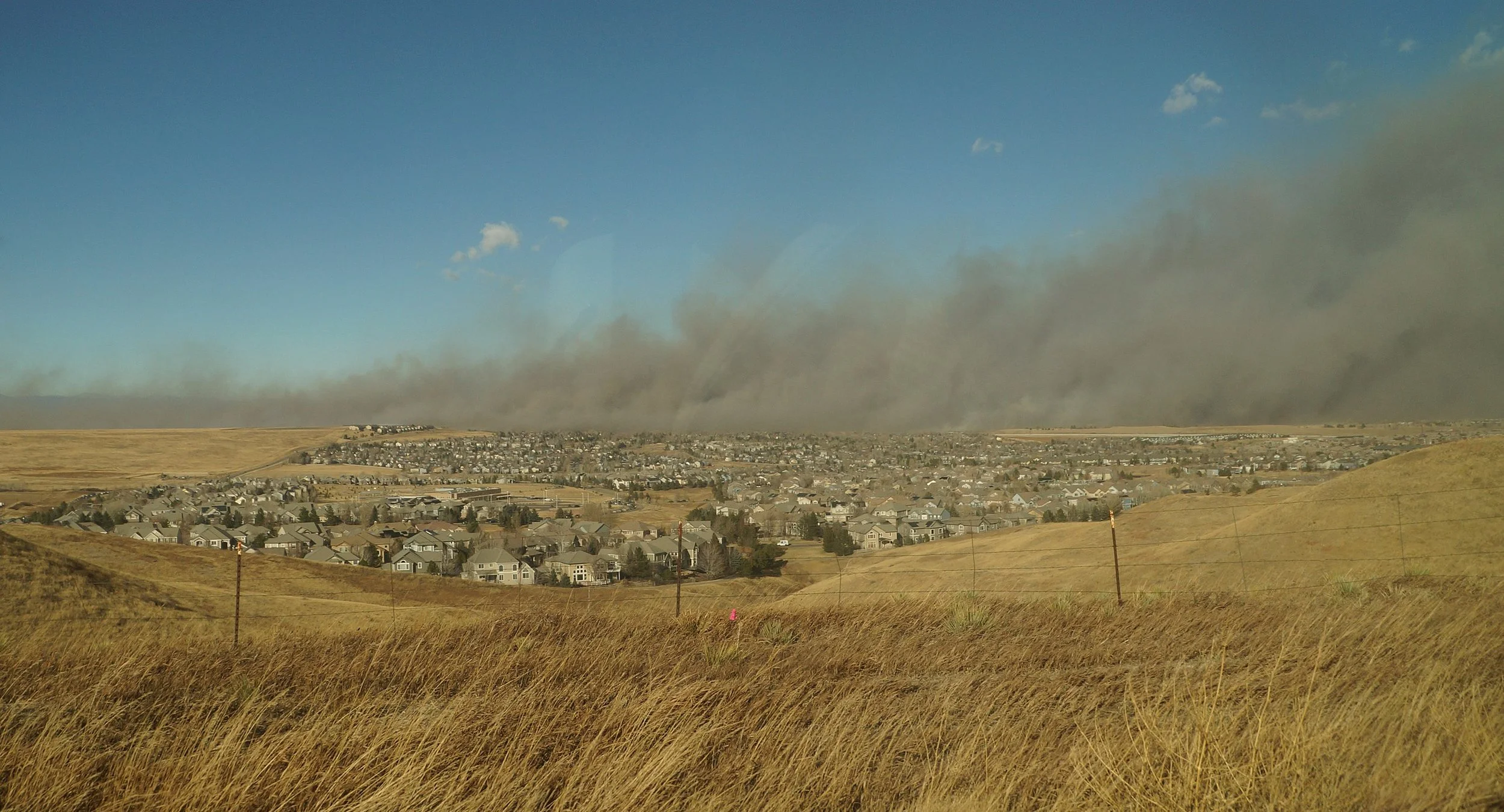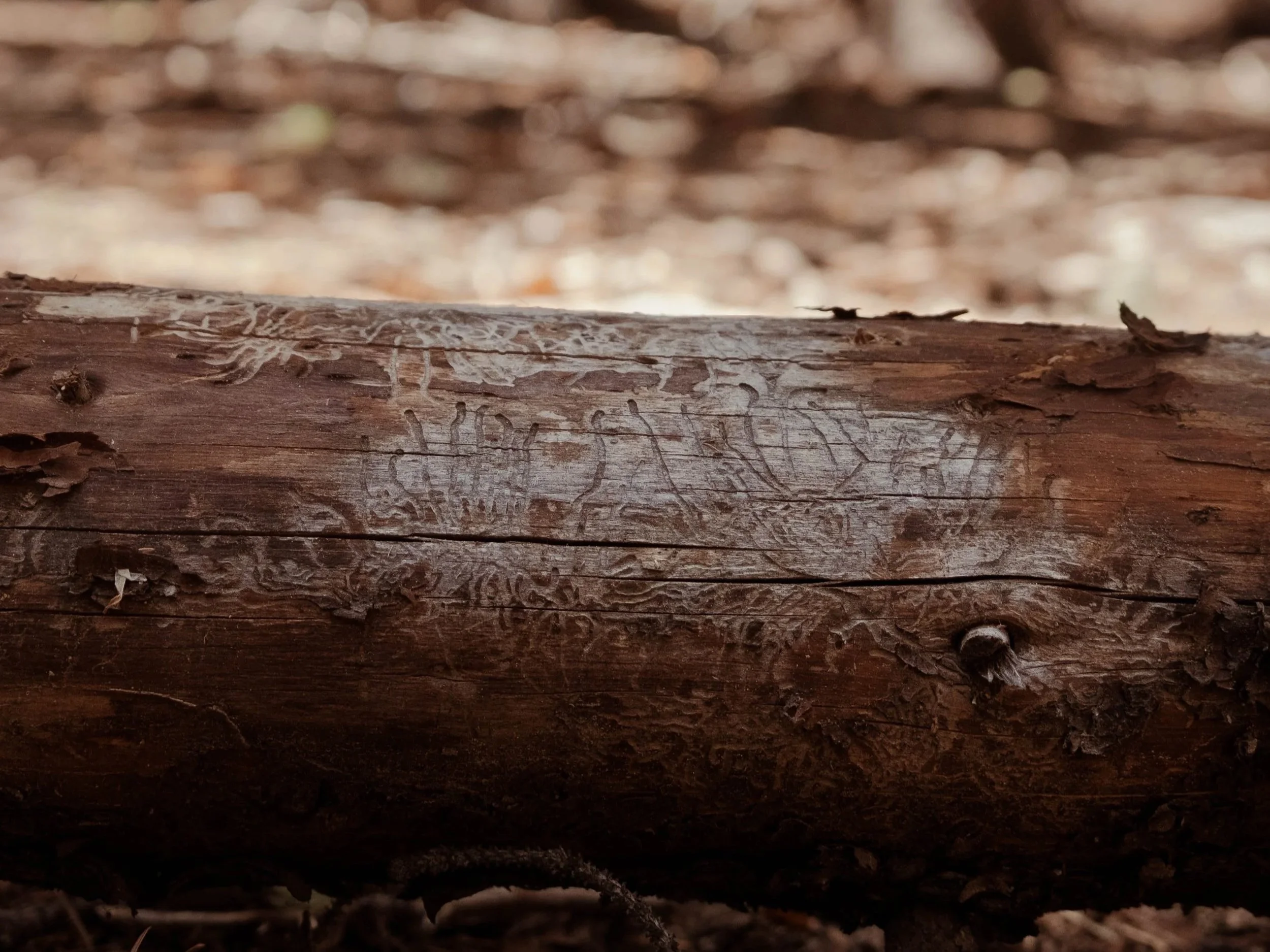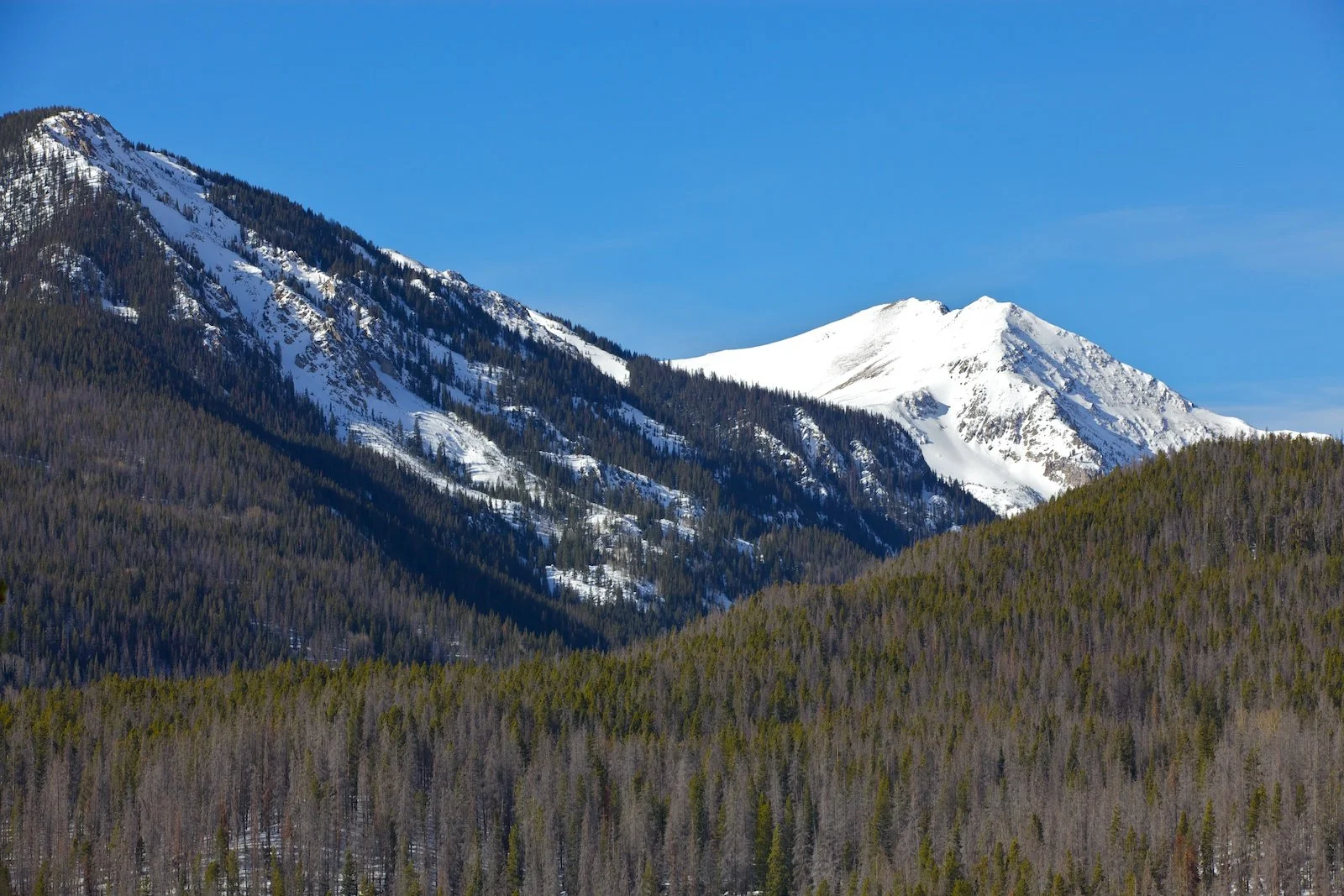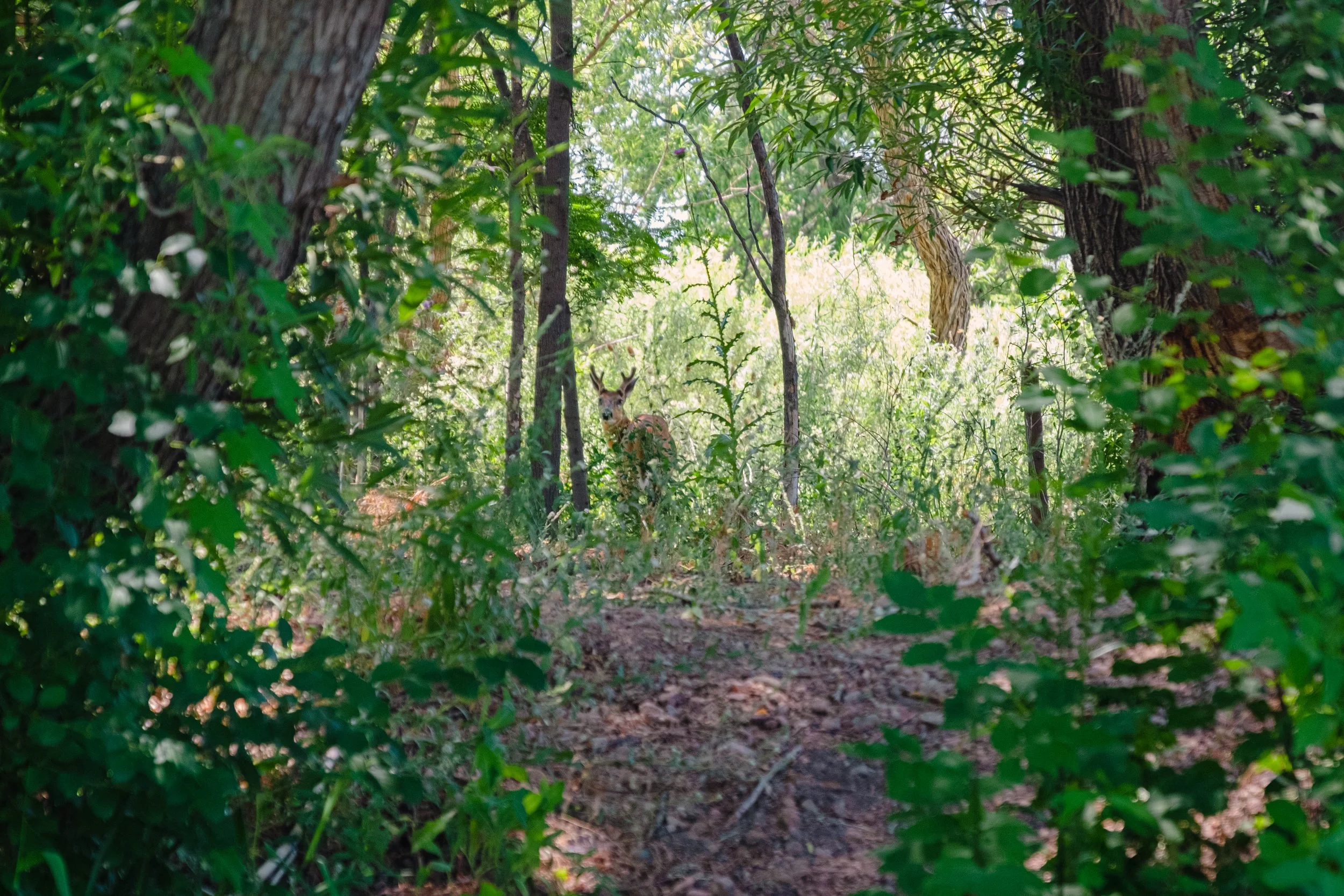Fires, Pests, and a Changing Climate
Decades of farming, grazing, fire suppression, and urban development has created a long-lasting human footprint on the land. However, with the addition of rising temperatures, increasing number of residents living in “wildland-urban interfaces” (urban areas coinciding with high-risk wildfire environments), invasive pests, and lack of forest management, our forests and all of our living residents-- human, animal, and plant alike—are being put in danger (Colorado State Forest Service, 2020).
Biodiversity, or rather the quantity and variety of species in a given area, helps the ecosystem thrive and become resilient to potential disruptions (Bullock et al 2011). When the ecosystem has been degraded, or no longer sports enough biodiversity, so that it can no longer maintain its essential functions, it becomes particularly vulnerable to diseases, pests, climate change, and natural disasters (Bullock et al 2011).
Large plumes of smoke are visible over Superior around 2:00 PM MST on December 30. View from State Highway 128, looking north. Tristantech
On December 30th of this past year, Colorado saw one of the most destructive wildfires it had ever experienced—the Marshall Fire. This first was first ignited in the South Boulder region, along that wildland-urban interface. We typically think of wildfires being at their peak in the late summers, but this fire thrived in the super-dry conditions of winter in Colorado. With winds at 40mph (and gusts up to 114 mph!), it spread uncontrollably, spanning 6,080-acres and consuming 1,056 buildings along this interface. Aside from the extreme winds, one of the other reasons the fire burnt so strong was that a wet spring helped native surrounding grasslands grow up to 3 feet tall. By the end of the summer, these grasses were dried out, creating a dense carpet of what would later become fire fuel. You can read more about this devastating event in this thorough, interactive StoryMap.
It’s important to note, that wildfires are not innately bad, and do provide necessary catalysts for growth and renewal (Colorado State Forest Service, 2020). In the past, when forests were primarily managed by indigenous populations, these wildfires helped maintain healthy ecological cycles (Indigenous Fire Ecology—Ologies). However, when the forest is already unhealthy and not properly managed, these forests can burn hotter, longer, and spread further, creating an extremely destructive combination. If you’ve ever been in Colorado during the summer, it’s possible that you’ve experienced a hazy, orange-sky day, where the Air Quality Index (AQI) has been above 60. Maybe the air will be poor for a few days, but eventually the sky clears. However, even after the fire is put out, the damage lingers, creating greater vulnerability to invasive bark beetles, less resistance to the elements, water pollution around burn scars, lack of erosion control, and a loss of biodiversity (Colorado State Forest Service, 2020).
While their impact is great, the issues facing Rocky Mountain's evergreen trees stretch beyond the presence of bark beetles. Bark beetles like the Mountain Pine Beetle and Spruce Beetle are native to Colorado, but become problematic pests when the conditions are right, and would therefore be considered direct and “problematic native species” by Salzar & Salafsky (2005). Bark beetles attack trees that are stressed due to other impacts such as drought, fire, and disease (Leatherman, et al 2007). Fire suppression causes problems in pine forests, as discussed in the Indian Hills fire assessment, stating “In the absence of fire or thinning treatments, the local ecosystems will become increasingly susceptible” (Butler 2007). For the spruce-fir forests, on the other hand, it is most important to prevent fires, as these old forests naturally only go through fire regimes every couple of hundred years, and wildfires that occur will weaken the bark of the trees, leaving them more susceptible to beetle infestations (Colorado State Forest Service, 2014). Additionally, the stripping of bark by woodpeckers and sapsuckers can also be a sign of bark beetle infestation, as they attempt to prey on the bark beetles and their larvae (Colorado State Forest Service, 2014). Some folks believe that these dead stands are an even greater risk to forest fires, but in fact, the loss of foliage actually creates gaps between trees reducing the risk of canopy fire spread as well as "ladder fuel" (the ability for the fire to have the fuel to ascend from the forest floor to the canopy) (Black et al, 2013).
Mountain Pine Beetle Damage in Rocky Mountain National Park | 2012 | Bchernicoff
Last but not least, is the more general direct threat of climate variability due to climate change such as increased heat and drought in the montane forests of the Rocky Mountains. We are living in a megadrought, and the conditions don’t seem like they will lighten up anytime soon. Water in the Rocky Mountains is largely dependent on snow melt, and the moisture of the soil is an important control point for drought, with dry soil severely escalating drought impact (Williams et al 2022). While the Colorado State Forest Service and USDA Forest Service are doing their best to work together to mitigate the issue of bark beetle infestations, as of April of this year, the spruce beetle still remains the “most deadly forest pest” with other beetles also continuing to do significant damage (Colorado State Forest Service 2022).
In addition to providing habitat for a variety of wildlife, creating shade, and holding together land to prevent erosion, trees are particularly good at removing carbon from the atmosphere and storing it. The trees that absorb carbon the best are young, healthy trees, while the ones that retain the most carbon are larger trees. When a forest burns, it causes the release of all of that stored carbon back into the atmosphere. Additionally, when any type of dead tree decomposes, even more carbon is released. (Colorado State Forest Service [Colorado’s Forests], 2021). An increase of carbon in the atmosphere traps heat from the sun within our lower atmosphere, causing a global rise in temperature.
Forest health is not just important for great hiking, recreation, and birdwatching, but for the quality of life of all living residents. The 2020 Forest Health Report released by Colorado State University is a call to action— “Until Colorado takes greater action, wildfires will remain a problem and continue to affect our air, our water and our safety. As the 2020 fire season clearly illustrated, the forest management needed to reduce fuels and mitigate wildfire risk to Colorado’s residents, lands and water supplies is not happening fast enough (CSFS 2021).”



